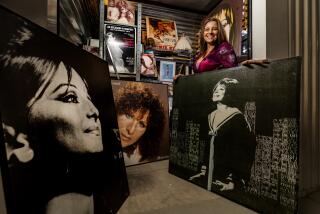SIGMUND FREUD AND ART: His Personal Collection of Antiquities <i> edited by Lynn Gamwell and Richard Wells (Harry N. Abrams: $16.95; 218 pp.) </i>
- Share via
The founder of psychoanalysis surrounded himself with more than 2,000 objects of Egyptian, Greek, Roman and Chinese antiquity; as he worked at his desk, hundreds upon hundreds of human and animal figures “faced him like a huge audience.”
Freud began collecting in the year of his father’s death, and continued doing so enthusiastically for more than 40 years. This book presents 67 pieces from Freud’s personal collection, many included in the exhibit now touring in the United States. As the essays point out, Freud’s art collection had much to do with his personal fantasies. Egyptian pieces account for nearly half of this collection, while art from the Judeo-Christian tradition is conspicuously missing. One interpretation of Freud’s taste turns on his preoccupation with legitimacy, his struggle with his identity as a Jew and as a psychoanalyst criticized by medical colleagues. With his art collection, Freud cast himself as heir to more ancient traditions.
To enjoy the company of such diverse and ancient objects must have required leaps of the imagination. And with such leaps, he made the world of his study and consulting room. While much is made of Freud’s reliance on the archeological metaphor--that psychoanalytic work, like excavation, entails sifting through evidence and reconstructing the past--this image seems of limited value in shedding light on Freud the collector. For it does not illuminate why he chose the pieces he did. His choices remain the puzzle so well set before us by this splendid volume.
More to Read
Sign up for our Book Club newsletter
Get the latest news, events and more from the Los Angeles Times Book Club, and help us get L.A. reading and talking.
You may occasionally receive promotional content from the Los Angeles Times.






